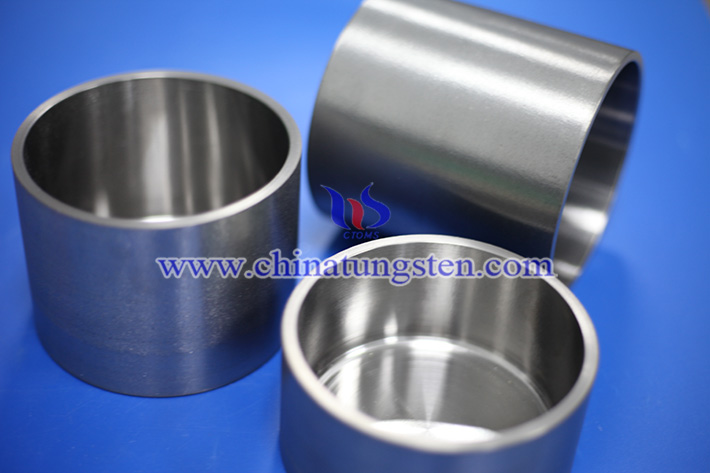Application of Tungsten Crucible in High-Temperature Melting
- Details
- Category: Tungsten Information
- Published on Tuesday, 29 April 2025 15:04
High-temperature melting usually involves the preparation of metals, rare earth elements or special alloys with high melting points, and the process environment is harsh, and the requirements for container materials are extremely high. With its unique properties, tungsten crucible has become the preferred container for high-temperature smelting, and its application involving metallurgy, aerospace, rare earth smelting and other industries.
The role in high-temperature melting
High-temperature smelting usually needs to be carried out in an environment above 2000°C or even close to 3000°C, such as the melting of high melting points such as titanium, zirconium, molybdenum, etc., or the refining of rare earth elements (such as cerium and lanthanum). Tungsten has a melting point of up to 3422°C, which is far higher than that of most metallic materials, allowing it to remain structurally stable at extremely high temperatures without melting or softening. In addition, the crucible is often used in melting environments protected by vacuum or inert gases such as argon to avoid high-temperature oxidation and ensure the purity of the melting process.

Performance Benefits
The use of tungsten crucibles in high-temperature melting benefits from a number of excellent properties. First of all, its high melting point and high temperature resistance ensure no deformation or failure under extreme conditions. Secondly, it has excellent corrosion resistance and is able to withstand a wide range of chemically active melts, such as rare earth elements or alkali metal melts. This performance is especially important for high-purity material preparation, as the dissolution or reaction of any container material can introduce impurities that can affect product quality.
In addition, the thermal shock stability of tungsten crucibles allows them to withstand rapid temperature changes. In high-temperature melting, the crucible may experience a rapid ramp-up from room temperature to over 2000°C, as well as rapid cooling after the melting. Tungsten's low coefficient of thermal expansion and good thermal conductivity effectively reduce thermal stress and reduce the risk of cracking or breakage. It also has high mechanical strength and can resist external forces or stresses caused by melt flow, even at high temperatures, ensuring process stability.

Technical challenges and areas for improvement
Although tungsten crucibles perform well in high-temperature melting, they still face some challenges. First of all, tungsten material is difficult to process, and the cost of manufacturing high-precision, large-size W crucibles is high. Powder metallurgy and plasma spraying are commonly used preparation processes, but need to be further optimized to reduce costs. Secondly, tungsten is susceptible to oxidation in an oxidizing atmosphere, resulting in surface deterioration or failure. As a result, high-temperature melting is often carried out in a vacuum or inert gas environment, which increases equipment complexity and operating costs.
In order to meet these challenges, surface coating technology has received a lot of attention in recent years. For example, applying an alumina or zirconia coating to the surface of a W crucible can significantly improve its oxidation and corrosion resistance and extend its service life. In addition, doping trace elements such as rhenium or lanthanum can improve the microstructure of the crucible, improving its thermal shock stability and creep resistance. Recycling and recovery technologies are also being studied to reduce the overall cost of use of crucibles by optimizing the reuse process.
- Chinatungsten Online: www.chinatungsten.com
- CTIA GROUP LTD: en.ctia.group
- Tungsten News & Price: www.ctia.com.cn
- Molybdenum News & Price: news.molybdenum.com.cn
- Tel.: 86 592 5129696; Email: sales@chinatungsten.com



 sales@chinatungsten.com
sales@chinatungsten.com